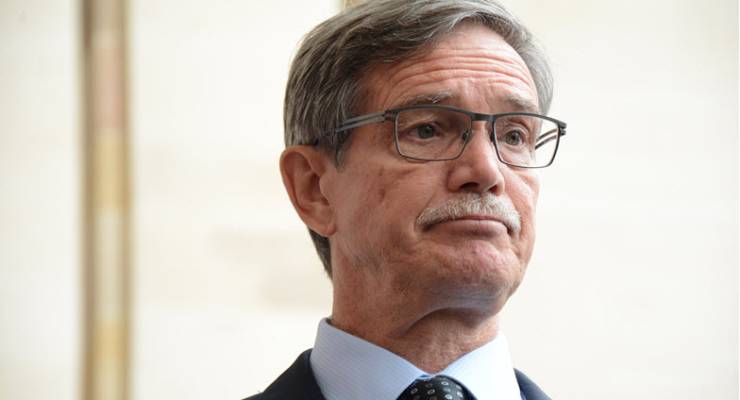
After suffering the worst defeat in the state branch’s history a month ago, the nightmare for Western Australia’s Liberals might be just beginning.
Analysis of federal polling trends at state level finds hostility to the party spilling over to federal voting intention, to an extent that will be causing sleepless nights for a number of Liberal MPs — including one of cabinet rank.
Based on published state breakdowns from Newspoll, unpublished ones from Essential Research and a few stray results from Ipsos, ReachTEL and Galaxy, the poll aggregate credits Labor with a 52.5-47.5 lead in a state where it hasn’t won the two-party vote at a federal election since 1987.
That amounts to a swing of over 7% to build on the 3.6% swing Labor received at the federal election last year, while still leaving them 3% shy of what they achieved at the state election last month.
Such a result would certainly topple sitting Liberals in the traditional marginals of Hasluck and Swan, and would, at the very least, put the pressure on in Stirling, held by Justice Minister Michael Keenan, and Canning, held by Andrew Hastie, a rising favourite among the party’s conservatives.
But perhaps the loudest of alarm bells will be ringing for Social Services Minister Christian Porter, who some rate as a future leadership prospect.
A former treasurer and attorney-general in Colin Barnett’s state government, Porter made the switch to federal politics when he was elected to the seat of Pearce at the 2013 federal election.
Pearce had been held by the Liberals since it was carved out of the hinterland north and east of Perth in 1990, by margins of never less than 5.3%.
However, what looked at first like a secure base for Porter to pursue his ambitions may be turning into quicksand.
Beneath the picture of stability it painted between 1990 to 2013, Pearce was undergoing dramatic change as it accommodated rapidly emerging new developments on the northern fringe of Perth.
[Poll Bludger: making sense of the WA election result]
Owing to the Howard’s government fabled success at courting outer suburbia with low interest rates, income tax cuts and handouts to families, the electoral impact of this transformation was not immediately apparent.
But the outer suburbs and their dominant demographic of young families are a great deal more volatile electorally than the small town and semi-rural territory that makes up the rest of Pearce, as they have lately found occasion to demonstrate.
The first tremor was a 5.8% swing to Labor in Pearce at last year’s federal election, which reached or exceeded 10% in the burgeoning suburban developments of Ellenbrook and Banksia Grove.
That was merely an appetiser for the state election, at which Labor picked up swings of 18% in the suburban booths covered by Pearce, along with 10% swings in the country booths.
If the results were replicated federally, Labor’s winning margin in the seat would run into double digits.
Needless to say, there are good reasons to doubt that the federal pendulum will swing quite that far.
Federal and state election results have persistently failed to align in Australia over recent years, and there is little doubt that some of what pollsters are picking up at the moment is short-term state election static.
However, the state election results aren’t the only reason the Turnbull government has to be fearful of what the state might have in store when the next federal election rolls around.
The Liberals’ dominance in Western Australia was largely built on a rising tide of affluence that crested along with the mining boom at the turn of the decade, the sharp reversal of which over the past five years may prove of enduring benefit to Labor.
Another factor at federal level has been the ingrained hostility of Western Australians to Canberra, which has been of benefit to the party that has historically identified with states’ rights.
That too could be in the process of being turned on its head, now that it’s state Labor taking on a federal Coalition government over the running sore of GST revenue, the state’s share of which has recently been determined at 34 cents out of every dollar raised.
Western Australia’s reputation as a politically conservative state is in very large part a phenomenon of the past three decades. At present, there are no guarantees it will make it to four.








William, the Coalition have done better in WA than the national average, on 2 party basis, since at least the 1950s (with only a few brief interludes – usually when the Labor leader had a connection to the state). You should know better than this.
Keenan, Porter and Hastie? So what’s to be worried about ….
Sounds good to me – what’s the problem. Esp Hasty Tasty, a very worrying creature.
Thanx for this analysis.
However, if it is ‘Needless to say, . . .’ don’t say it, and even better, don’t write it.